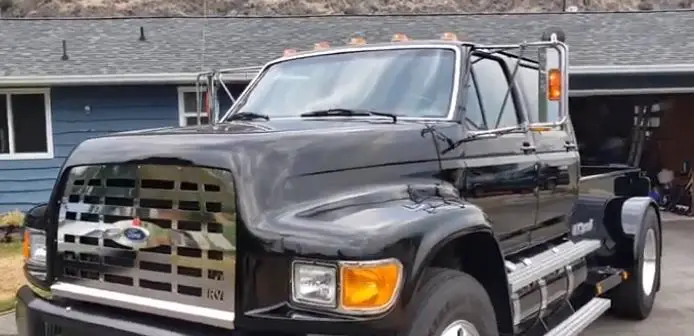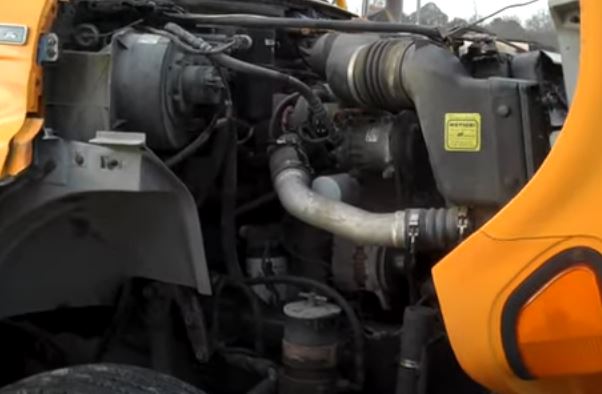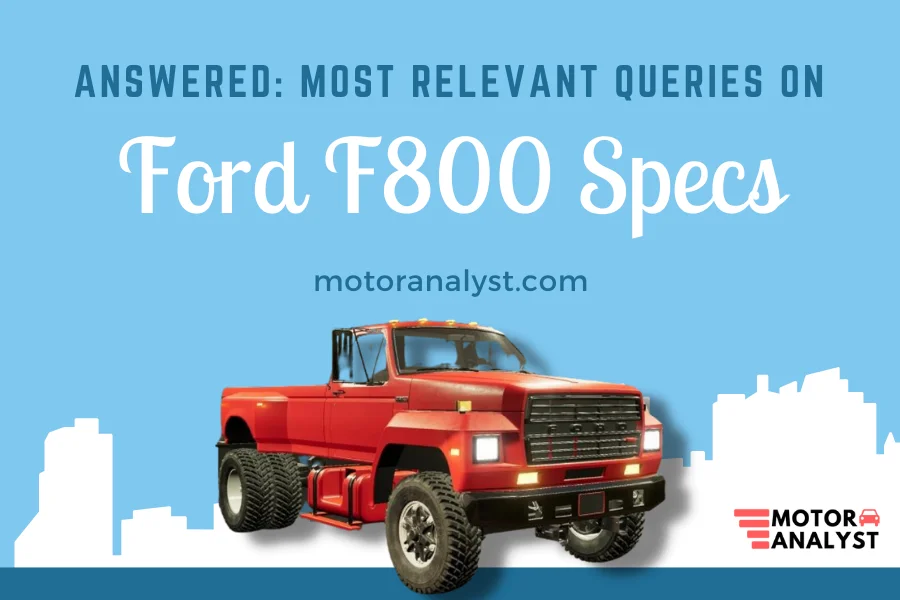Ford F800 is one of the company’s automobile models. However, when considering Ford F800 specs and its consumer qualities, vehicle owners have received positive feedback. It isn’t the most a-go type of vehicle on the market. Furthermore, its wholly revamped motor and wide range of hardware are still regarded as excellent choices. Jeep has a new outstanding look that is clean, stylish, and classy.
The Ford F-800 models were carried over from the previous generation. These medium-duty trucks shared facade styling with the larger L-Series trucks. Nevertheless, this content will explain everything you need to know about the Ford F800 specs before making any decisions. Stability, performance, version details, and pricing contribute to the design’s rise to the top of the industry’s demand. A variety of factors can influence price, including age, characteristics, destination, and specifications. It must also maintain its legitimacy in the eyes of the customer.
Ford F800 Specs and Types of Generation
First Generation Ford F800 Specs
The truck had a sleek design with a one-piece windshield and integrated headlights. The passenger-side windshield wiper and sun visor, as well as the passenger-side taillight, were available as options. A wide aerodynamic cross piece with three similarly aerodynamic supports connected the headlights. In later tracks, the rear window was more expansive, and the dashboard was redesigned.
Second Generation Ford F800 Specs
Ford offers “Low GVWR” versions of each model, which are extremely rare. A dome light, lighter, arm rests, sun visors, and radio were new interior features. The displacement of the six-cylinder engine was increased from 215 to 223 CID, and power steering was added as an option. A larger wrap-around back window was also available as an option on the model.
Third Generation Ford F800 Specs
In 1957, the truck was restyled once more, with a hood that sat flush with the fenders—introducing a new distinctive and sleek chrome grille. Flareside was the name given to the traditional separate-fender body in the back, while the style side was given to a new smooth-sided look.
Fourth Generation Ford F800 Specs

For 1961, the truck was completely redesigned with a wider appearance, and unibody trucks with an integrated cab and box were available. With the 1965 powertrain update, the engine produced over 200 hp (150 kW). Each model was still available with a “Low GVWR” option.
Fifth Generation Ford F800 Specs
The hood emblems were redesigned to include reflectors. The 360 and 390 cubic inch engines were introduced the same year, giving the trucks larger versions of Ford’s FE engine family. The heater controls, armrests, interior door handles and window cranks, and the upper trim moldings on models with these features were among the changes noted in the interiors.
Sixth Generation Ford F800 Specs
Front brake pads, enhanced cabin measures, complete double-wall bed construction, and greater use of galvanized steel were all included in this variant of the F-series, built on the updated framework of the 1965 fourth generation. The sixth generation saw a variety of functional modifications as well as a model line growth. This classic “split-grille” design has been updated with glossy black crown moldings around the headlights and a refined overall look. Part-time or full-time four-wheel-drive was available on SuperCab models for the first time in 1978.
Seventh Generation Ford F800 Specs
With sharp lines and flat panels, the new truck had a squarer appearance. Ford added its new AOD automatic overdrive (four-speed) transmission as an option on light-duty models, which was designed with improved fuel efficiency in mind. Ford’s first use of independent front suspension on 4×4 models was also a first.
Eighth Generation Ford F800 Specs
The 1987 design was more streamlined, with more specific maintenance items. The first truck to have rear antilock brakes was now standard. Automatic locking hubs were added to the four-wheel-drive vehicles. The addition of a cargo light behind the cab came near the end of this generation.
Ninth Generation Ford F800 Specs
The 1truck received a new front end with a more aerodynamic appearance, a new dashboard, and the return of the Flareside bed. 17-inch (430 mm) aluminum wheels and gas-charged shocks were included in the revised version. The Lightning was powered by a particular version of the 351-cubic-inch (5.8 L) V8 engine that produced 240 horsepower (180 kW). A driver’s side airbag, “CHMSL” third brake light, brake-shift interlock, and CFC-free air conditioning were all included in the 1994 models.
Tenth Generation Ford F800 Specs
With the new F-series, Ford took aero styling even further in 1997, with a rounded nose. It came with a load-leveling rear suspension. Engines that were wholly new and more efficient were available. It also came with color-keyed front and rear bumpers, clear lens headlights, and integrated round fog lamps.
Eleventh Generation Ford F800 Specs

In traditional open hooks, all F-Series vehicles have two large “closed loop” front tow hooks. With just one hook, the F-Series can pull up to 30,000 Lb. (14,000 kg). Improved front seats with more supportive side bolstering were also available, as were new 20″ wheels. The 3-valve 5.4 L Triton V8 now comes in a flex-fuel version.
- Recommended Reading | 2021 Genuine Comparison Ford Ranger Vs F150: Read Now!
Twelfth Generation Ford F800 Specs
The truck has a more extensive, more flexible interior, an updated three-bar grille, and more cab styles and trims levels to choose from. For better fuel economy and safety and increased payload and towing capacity, the chassis uses lighter-weight, low-strength plastic. Other Ford vehicles have electronic stability control and anti-rollover safety features. The towing and hauling capabilities of 11,300 lbs. and 3,060 lbs. , respectively, could be carried.
Engine Specifications

With the 2009 redesign, three engines were initially offered: a revised 5.4 L 3-valve Triton V8 that is E85 capable and produces 320 hp (240 kW) and 395 lb. – ft. (536 Nm) of torque, a 292 hp (218 kW) 4.6 L 3-valve V8, and a 248 hp (185 kW) 4.6 L 2-valve V8. On all engines, electric power-assisted steering is available. Nonetheless, all engines returned with a long list of modifications, giving Ford a unique position in the industry.
Safety Concerns
The importance of comfort and security cannot be overstated. It renders a final judgment on the car’s dependability. This model’s security and safety features are entirely based on high-tech provisions. When it comes to comfort, the model never fails to deliver. The model aces the automobile sector based on the convenience of the technical aspects.
FAQs on Ford F800 Specs
What is the maximum weight a Ford f800 can carry?
gross vehicle weight of Ford F800 comes approx. 26,000 pounds. As per its weight, it capacitates 9,000 and 17,500 pounds, respectively.
What is the weight of an f800 dump truck?
A dump truck’s average weight is estimated to be around 26,193 pounds (11,881 kg).
What are the various body styles for the Ford F800?
There are three different types of categorization: 2-door regular cab, 2+2-door extended cab (SuperCab), and 4-door crew cab are the three types of cabs available (SuperCrew)
What Kind of batteries are used in the modern-day Ford F800?
The recent model of the F800-series, i.e., Ford Lobo, uses a 1.5 kWh lithium-ion battery.

Conclusion
When it comes to luxurious Ford models with reasonable budgets, this model is a great choice. From the interior materials to the advanced technology used in the model’s production, it is a good fit for a modern vehicle. The long road of change has proven that it is one of the best in the automobile industry.
So, now that the discussion on Ford F800 Specs has come to a close take a close look at your requirements and make your final decision!

Really interesting post!